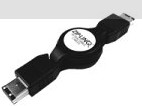100 Years of Flight: A Lesson about Learning Curves
Kevin Kelly excerpts from Bayles' and Orland's Art and Fear:
The ceramics teacher announced on opening day that he was dividing the class into two groups. All those on the left side of the studio, he said, would be graded solely on the quantity of work they produced, all those on the right solely on its quality. His procedure was simple: on the final day of class he would bring in his bathroom scales and weigh the work of the “quantity” group: fifty pound of pots rated an “A”, forty pounds a “B”, and so on. Those being graded on “quality”, however, needed to produce only one pot -albeit a perfect one – to get an “A”. Well, came grading time and a curious fact emerged: the works of highest quality were all produced by the group being graded for quantity. It seems that while the “quantity” group was busily churning out piles of work – and learning from their mistakes – the “quality” group had sat theorizing about perfection, and in the end had little more to show for their efforts than grandiose theories and a pile of dead clay.
Remarkable that the law of learning (experience) curves should appear in art just as it does in semiconductors, and should in space vehicles. Something to keep in mind on this 100th anniversary of practical powered flight: We didn't get to 747s and F-22s by building one – or four- vehicles n 1903 and perpetually refitting them. Thousands of early experimental aircraft were built, run, wrecked, obsoleted, scrapped. If we want to have a similar oucome in space one hundred years hence, it's time to get onto the 'quantity' curve. And apparently only the private sector has the stomach for that trip.
Update: I didn't know this test was scheduled when I wrote the post, but it makes the point admirably.
Hat tip to Ole Eichhorn. [Due Diligence]
Sound advice regardless of what you're working with or learning about. Fail early and fail often.
I had expected to post a bit more than I have over the last few days, but I have limited connectivity and bandwidth. The good news in that is that I do have snow and in the spirit of learning curves I've been adding more miles to my snowboarding experience. I expect to be back to regular posting in a few days.
To all of you, a healthy and happy New Year.
 It used to be that I shlepped a power-strip (sometimes two!) with me when I went on the road, because they haven't built the hotel-room yet that has enough plugs to charge my entire device array, not least because everything that fits in my pocket comes with a charger whose transformer brick eats two or three outlets.
It used to be that I shlepped a power-strip (sometimes two!) with me when I went on the road, because they haven't built the hotel-room yet that has enough plugs to charge my entire device array, not least because everything that fits in my pocket comes with a charger whose transformer brick eats two or three outlets.